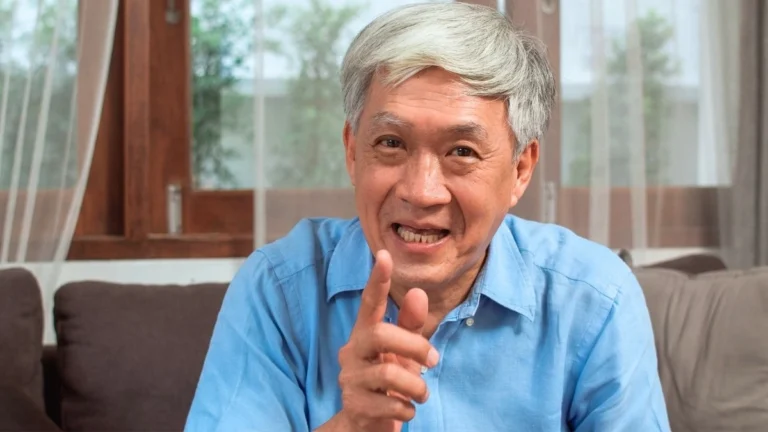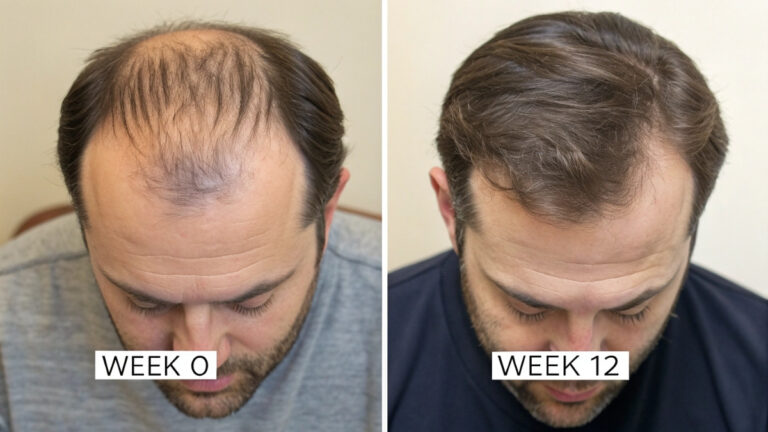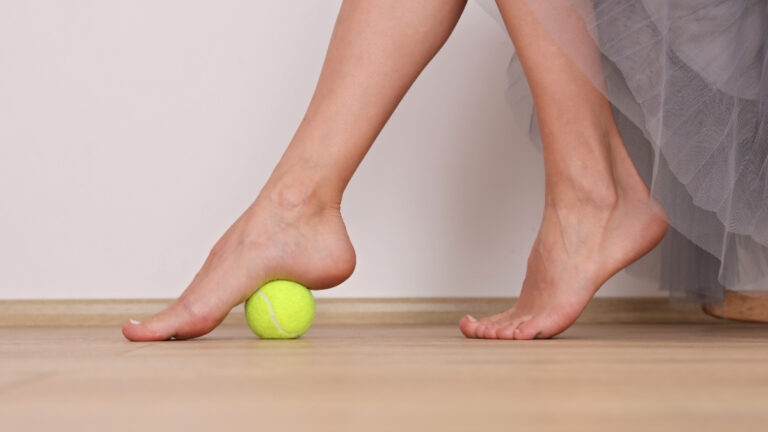The Ultimate Guide to Fixing Your Posture and Standing Tall at Any Age

A common modern scenario involves individuals reading on a smartphone with their head bent forward, or sitting at a laptop with rounded shoulders, experiencing a familiar, dull ache between the shoulder blades. This posture is not merely a bad habit; it represents a modern epidemic. We are spending more time on devices and in non-ergonomic setups than ever before.
This societal shift has led to a surge in “Tech Neck,” or “Text Neck Syndrome,” a condition with an alarmingly high prevalence rate. Depending on the population studied, prevalence estimates range widely from 16.7% to as high as 93.2%. The consequences are significant: neck pain is now the fourth leading cause of disability worldwide.

This report provides an evidence-based, 2025-ready plan to rebuild posture, moving beyond the simple advice to “sit up straight.” It details how to self-assess specific imbalances, perform clinically-proven exercises for correction, optimize workspaces, and understand the evidence for and against popular posture trends.
📱 Tech Neck Syndrome 2025
The Modern Epidemic Affecting Millions Worldwide
The clinical explanation for Forward Head Posture and rounded shoulders – a characteristic “cross” pattern of muscle imbalances
(Back of neck)
(Chest)
(Front of neck)
(Rhomboids & Lower Trapezius)
Stretch the tight muscles AND strengthen the weak ones. This dual approach is essential for lasting posture correction.
The Anatomy of a Slouch: Why Posture Is Worse in 2025
The Epidemic: Tech Neck and Forward Head Posture
Musculoskeletal disorders related to technology use are rampant. “Tech Neck Syndrome” is defined as a disorder caused by the prolonged maintenance of a forward-flexed head and neck position.1 This is a direct consequence of modern device usage. On average, people spend between three and five hours on their smartphones daily, with some reports indicating almost half of Americans spend even more.
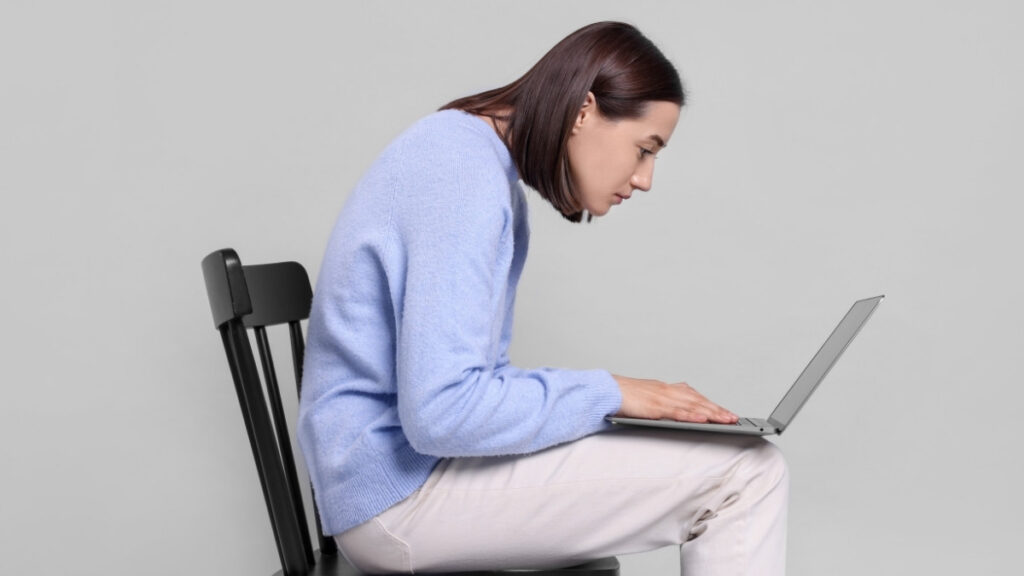
The physics of this position are detrimental. The human head is heavy, and for every inch the head moves forward, the force on the cervical spine increases. A 2025 report from the Australian Chiropractors Association (ACA) highlights this, noting that users who bent their neck to look down at their device were 24% more likely to experience neck pain than those who held their device at eye level.
The 3-Minute Posture Self-Assessment: Identify Your Imbalance
Correcting posture must begin with an accurate assessment of the specific imbalances at play. The following tests can be performed to identify common postural deviations.
Test 1: The Wall Test
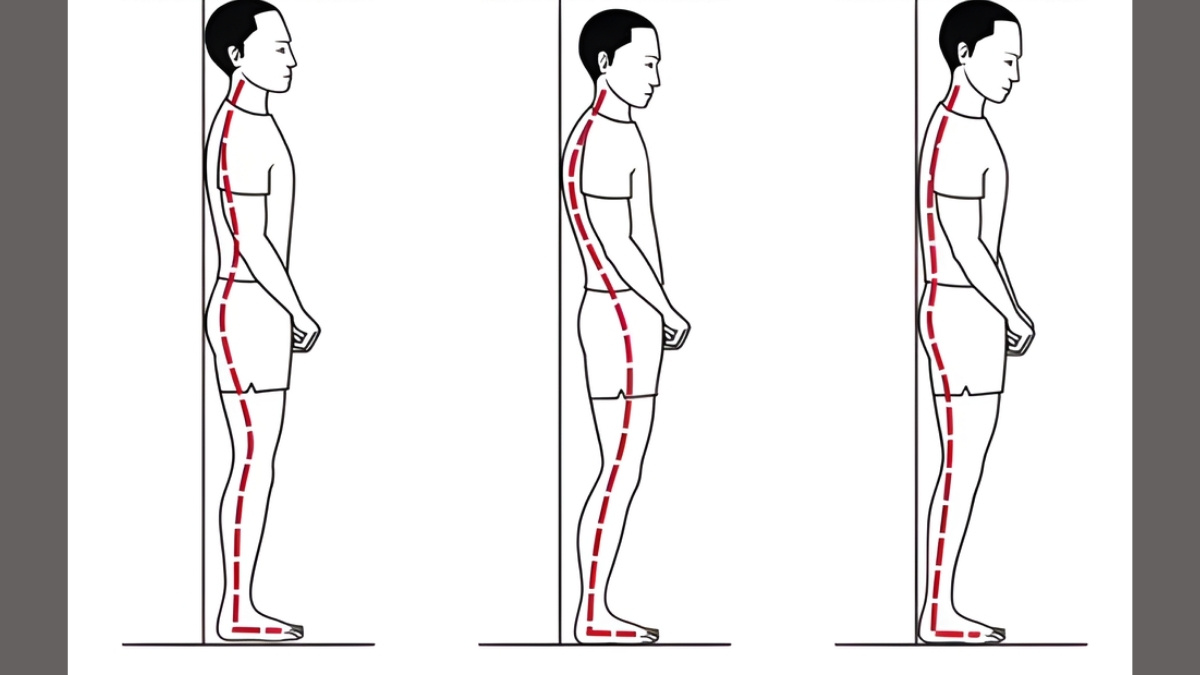
This is the gold standard for an at-home FHP assessment.
- An individual stands with their back to a wall.
- The heels, glutes (buttocks), and scapulae (shoulder blades) should all make contact with the wall.
- Without straining or tilting the chin up, the individual then attempts to touch the back of their head (the occiput) to the wall.
If the head does not touch the wall, or if the individual must abnormally lift their chin to make contact, FHP is present. The gap between the head and the wall indicates the severity of the forward-jutting posture.
Test 2: The Mirror Test (Front and Side)

From the Front: A visual check in a mirror can reveal asymmetries. An individual should look for:
- Are the shoulders level, or is one higher than the other?
- Are the hips level?
- Does the head tilt to one side?
From the Side: This assessment uses the concept of a “plumb line.” An individual should imagine a perfectly straight line running down the side of their body. In ideal alignment, this line passes through the earlobe, the center of the shoulder joint, the hip joint, and a point just in front of the ankle. In cases of FHP, the earlobe will be significantly in front of the shoulder’s center line.
Test 3: The Phone Test
A simple, powerful diagnostic is to have another person take a photograph from the side while the subject is “naturally” using their smartphone. The resulting image often provides a stark visual of the CVA and the degree of neck flexion, serving as a powerful motivator for change.
Understanding the Imbalance: Upper Crossed Syndrome
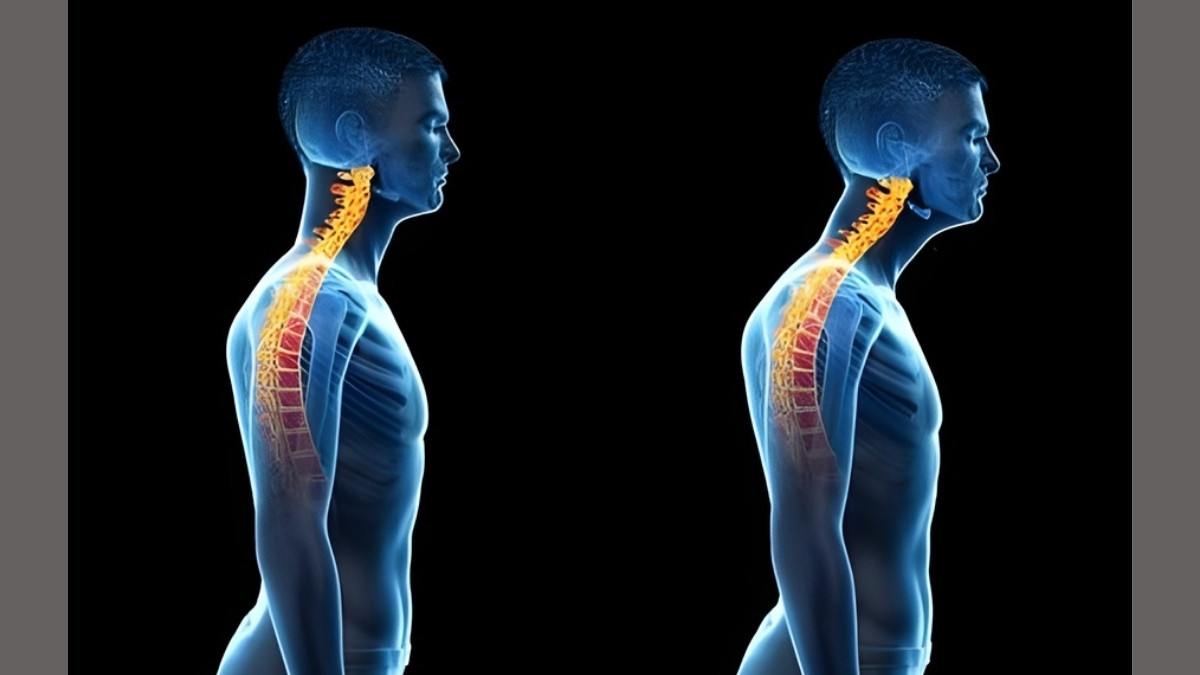
These tests often reveal a pattern of imbalance known as “Upper Crossed Syndrome.” This is the clinical explanation for FHP and rounded shoulders. It is characterized by a “cross” of:
- Tight, overactive muscles: The posterior neck extensors (at the back of the neck) and the pectoralis (chest) muscles become tight.
- Weak, underactive muscles: The deep cervical flexors (at the front of the neck) and the mid-back muscles (rhomboids and lower trapezius) become elongated and weak.
Any effective correction plan must address both sides of this imbalance: stretching the tight muscles and, most importantly, strengthening the weak ones.
What Your Pain Is Telling You
Symptoms are the body’s communication system. The following table translates common pains into their likely postural causes.
🧍 Your Posture Problems Decoded
Match Your Symptoms to the Root Cause
Also called “text neck” or “tech neck” – your head juts forward past your shoulders, putting massive strain on your neck muscles.
Your upper spine curves forward excessively, creating a “hunched” or “rounded” appearance that strains your mid-back muscles.
Rhomboids & Lower traps
Your pelvis rotates forward, creating an exaggerated curve (hyperlordosis) in your lower back. This puts constant compression on your lumbar spine.
& Core muscles
(front of hips)
The Core Four Corrective Exercises (Evidence-Based)
The guiding principle for correction is to activate the weak and stretch the tight. Posture cannot be corrected by stretching alone; the “forgotten” stabilizing muscles must be strengthened and reactivated.
Move 1: Deep Neck Flexor Activation (The Chin Tuck)
How-to:
- Lie on the back with knees bent and feet flat on the floor.
- Look straight at the ceiling, keeping the head in a neutral position (not on a pillow).
- Gently nod the chin “yes,” as if trying to press the back of the neck flat into the floor.
- The movement is subtle. It should be felt in the front of the neck, not the back or sides.
- Hold for 5-10 seconds and repeat 10 times.
The Proof: This exercise is the direct antidote to FHP. FHP is characterized by weak deep cervical flexors. This movement isolates and strengthens them. A 2021 systematic review and meta-analysis confirmed the positive effect of deep neck flexor strengthening on improving FHP. For an advanced version, gentle resistance can be applied with a hand placed under the tucked chin.
Move 2: Scapular Retraction (The Wall Angel)
How-to:
- Stand with the back against a wall, feet slightly forward.
- Place the arms in a “W” or “goalpost” position, with elbows and the backs of the hands touching the wall (as much as possible).
- While keeping the core engaged (preventing the low back from arching), slide the arms up the wall.
- Then, squeeze the shoulder blades down and back to pull the arms back down into the “W” position.
The Proof: This strengthens the scapular retractors (rhomboids, lower trapezius). These are the mid-back muscles that are weakened and over-stretched by rounded shoulders.
Move 3: Thoracic Spine Mobility (Cat-Cow)
How-to:
- Start on all fours, with hands under shoulders and knees under hips.
- Inhale (Cow): Drop the belly toward the floor, lift the gaze, and open the chest.
- Exhale (Cat): Press the floor away, round the upper back toward the ceiling, and tuck the chin.
- Move slowly between these two positions for 10-15 repetitions.
The Proof: A stiff, rounded upper back (thoracic kyphosis) “locks” the neck into FHP. The neck juts forward to compensate because the upper back cannot extend. This exercise restores mobility to the thoracic spine, allowing the shoulders and neck to sit back in their proper alignment.
Move 4: Glute Bridge
How-to:
- Lie on the back with knees bent and feet flat on the floor, hip-width apart.
- Squeeze the glutes to lift the hips off the floor until the body forms a straight line from the shoulders to the knees.
- Hold for 3 seconds, focusing on the glute contraction, not on arching the low back.
- Lower slowly and repeat 10-15 times.
The Proof: Posture is a full-body system. Many individuals with sedentary lifestyles develop weak, “forgotten” glutes and a tight-core imbalance, which contributes to an anteriorly tilted pelvis and low back pain.9 This move “wakes up” the glutes, providing a stable foundation for the entire spine.
The 2025 Ergonomic Blueprint: Optimizing Your (Hybrid) Workspace

Exercise alone cannot win the battle; it is not possible to out-exercise an 8-hour slouch. The environment must be optimized. The core philosophy for 2025 is “Sit-Stand-Move.” As Astrid DiVincent noted, even a perfect ergonomic setup is harmful if maintained for 10 hours straight.
This is why height-adjustable (sit-stand) desks are a top ergonomic solution for 2025. They promote movement, improve circulation, and have been shown to reduce the risk of back pain.
The 5-Point Ergonomic Checklist
For any desk setup (home or office), the following 5-point checklist is non-negotiable:
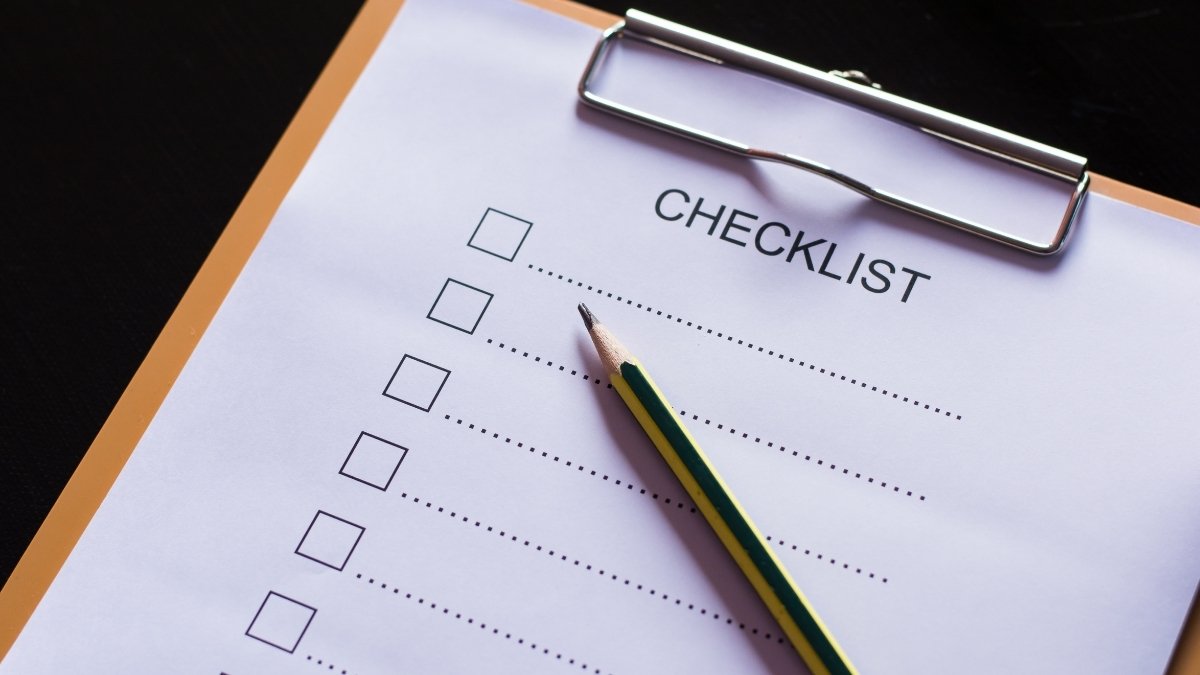
- Monitor: The top of the screen should be at or slightly below eye level. It should be positioned an arm’s length away. (For laptops, this requires a laptop stand or monitor arm).
- Chair: Feet must be flat on the floor (or on a footrest) with thighs parallel to the ground. The chair’s lumbar support should be engaged with the low back.
- Keyboard: The keyboard should be positioned to allow the elbows to be at a 90-degree angle, with wrists in a neutral (straight) position.
- Mouse: The mouse should be at the same height as the keyboard and close to the body to avoid straining the shoulder.
- Lighting: Lighting should be optimized to reduce glare on the screen. Desk lamps should provide task lighting, and for video calls, lights should be positioned to the side to avoid glare.
Ergonomic Hacks for the Home Office
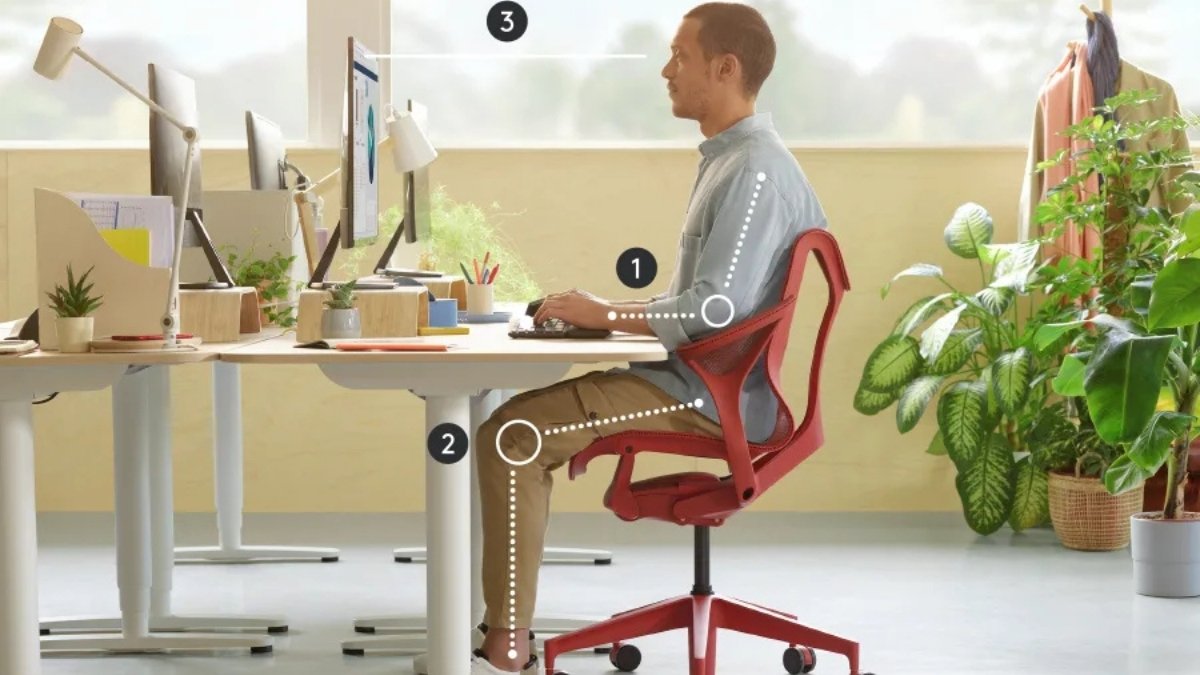
Not all setups require expensive equipment. Budget-friendly solutions include:
- Using a stack of thick books as a laptop stand to raise the screen to eye level.
- Using a rolled-up towel as a lumbar support in a chair that lacks one.
- Using a small cushion or a dedicated foam footrest if feet do not rest flat on the floor.
Posture Beyond the Desk: How to Sleep and Move
Posture is a 24-hour concern. An individual can perform 30 minutes of corrective exercise, but if they sleep for 8 hours in a spine-twisting position, they are negating their efforts. The goal during sleep is to maintain a neutral spine.
The Expert Guide to Sleep Posture
Advice from experts at the Mayo Clinic and Cleveland Clinic provides a clear guide to sleep posture:
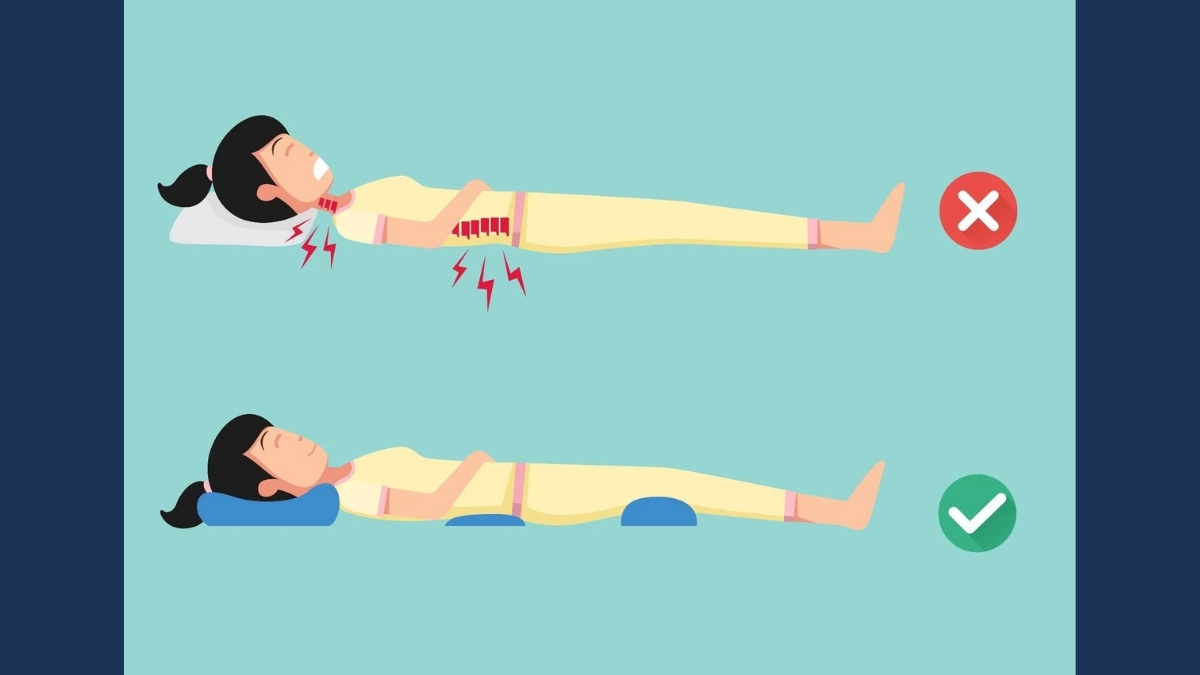
- Back Sleepers: This position can be good for spine alignment. To optimize it, a pillow should be placed under the knees. This relaxes the back muscles and maintains the natural curve of the lower back. The head pillow should support the neck, not prop it up.
- Side Sleepers: This position is often cited as the best, especially for those with sleep apnea. To maintain a neutral spine, a pillow should be placed between the knees. This prevents the top leg from pulling the spine out of alignment.
- Stomach Sleepers: Experts recommend avoiding this position. Mayo Clinic experts identify it as the “worst” sleeping position because it forces the head to be cranked to one side for hours, putting significant strain on the neck and spine.
The Power of “Micro-Breaks”
The single most effective postural advice, according to HSS physical therapists, is to move often. Setting a timer to get up every 30-45 minutes, even for 60 seconds of stretching or walking, breaks the cycle of stasis and prevents muscles from locking into a harmful position.
Debunking 2025 Posture Trends: What Works vs. What’s Viral
The demand for posture correction has fueled a market of viral trends and gadgets. An evidence-based approach can separate hype from help.
Trend 1: “Mewing” (The TikTok Craze)
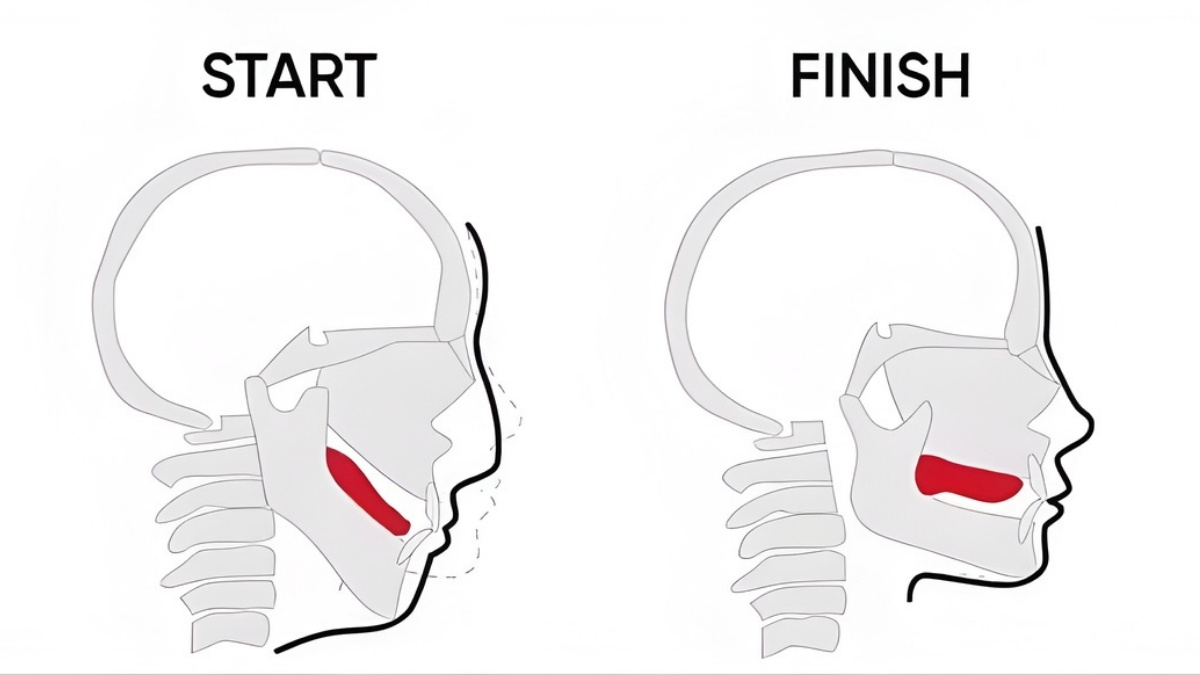
- What it is: “Mewing” is a technique involving specific oral posture, namely keeping the tongue pressed against the roof of the mouth. It went viral on platforms like TikTok with claims of reshaping the jawline.
- The Verdict: Does it work? Probably not for adults seeking “dramatic jawline transformation”. There is limited scientific research to support its claims of changing facial bone structure in adults.
- The Real Benefit: While not a miracle fix, mewing does promote nasal breathing (over mouth breathing) and brings awareness to oral posture, which is a small part of correcting FHP. However, it is not a substitute for the exercises in this report or professional orthodontic care.
Trend 2: Posture Correctors (Braces vs. Tech)
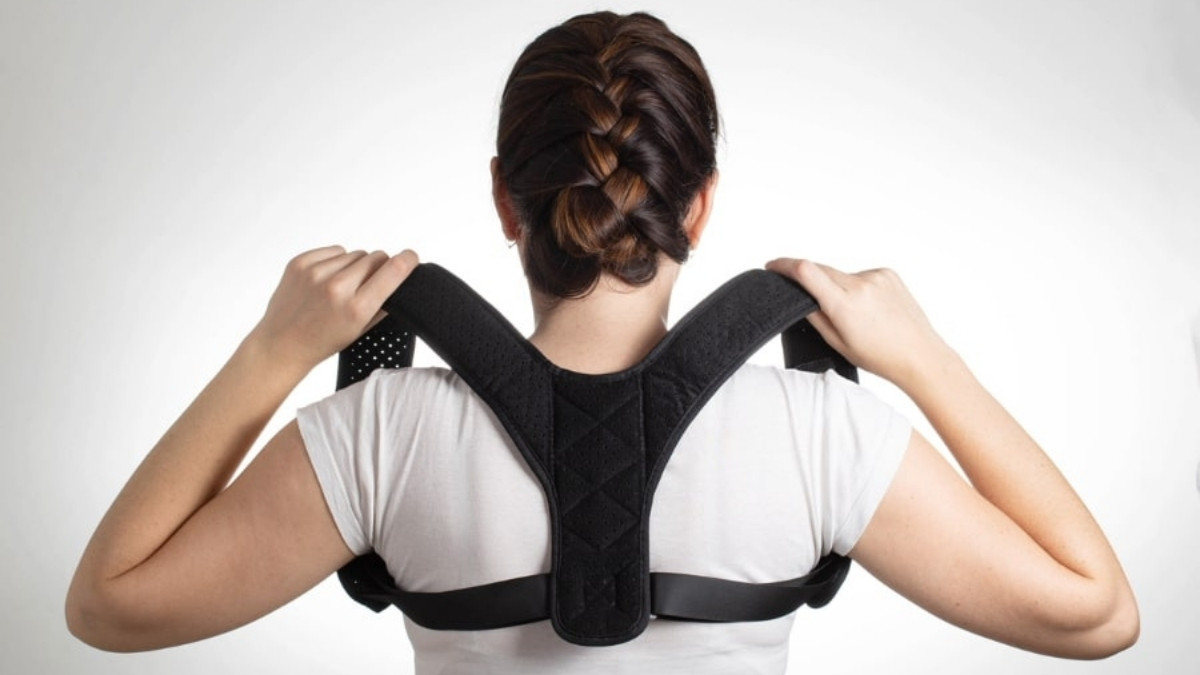
- Physical Braces (e.g., FlexGuard): These are fabric harnesses that pull the shoulders back.
- The Verdict: Physical therapists generally agree that strengthening is superior. These braces function as a crutch or a reminder. They do not build the muscles needed for long-term correction. According to physical therapist Karena Wu, PT, DPT, they can be a helpful first step to understand what good posture feels like, but they are not a cure.
- Tech Sensors (e.g., Upright Go S):
- The Verdict: This is a more advanced solution. The Upright Go S is an app-enabled sensor that attaches to the back and provides a haptic vibration when the user slouches. This is superior to a brace because it trains awareness rather than simply holding the body in place. The primary downside is that some users may become desensitized to the vibration over time.
Trend 3: Posture Apps (Exercises and Reminders)

- Types: There are two main categories: (1) Exercise apps like Perfect Posture or Healthy Spine & Straight Back, which provide 30-day plans and guided workouts.
(2) Reminder apps like Smart Posture, which use the phone’s own sensors to detect poor posture while the phone is being used. - The Verdict: Highly recommended. These apps provide the two most crucial components for lasting change: structure (guided plans) and consistent reminders that build new neuromuscular habits.
At the Last,
Fixing posture in 2025 is not about a single “fix,” a magical brace, or a viral trend. It is a dynamic, three-part system:
- Assessing the specific imbalances (like FHP) using simple diagnostics.
- Correcting those imbalances with targeted, evidence-based exercises, particularly deep neck flexor strengthening.
- Optimizing the environments where individuals live, work, and sleep to support a neutral spine.

This is not a passive process, but an active one. The journey to fixing posture and standing tall starts not with a purchase, but with a single, conscious movement. By integrating these principles of movement, exercise, and environmental awareness, individuals can effectively combat the modern epidemic of poor posture at any age.


